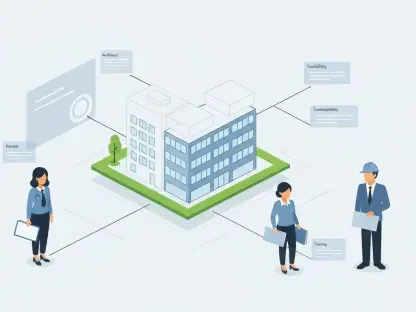Imagine driving down a state highway, only to hit a pothole so deep it damages your vehicle, or worse, causes an accident, a scenario that is becoming all too common as states across the United States grapple with a staggering $86.3 billion funding shortfall for road maintenance over the next decade. The safety and reliability of transportation infrastructure are at stake, impacting not just daily commutes but also economic vitality. This roundup article dives into diverse perspectives from industry leaders, policymakers, and budget analysts to explore the depth of this crisis, compare differing views on federal support and state strategies, and uncover potential solutions to bridge this massive gap. The aim is to provide a comprehensive look at how states might navigate these challenges and ensure safer roads for all.
Unpacking the Infrastructure Crisis Facing American States
The scale of the funding shortfall is daunting, with 24 states projecting a combined deficit of $86.3 billion over the next ten years, according to recent analyses of transportation asset management plans. This gap threatens to undermine efforts to maintain roads and bridges in acceptable condition, posing significant risks to public safety. Industry observers note that deteriorating infrastructure could lead to more accidents, higher vehicle repair costs, and disrupted supply chains, amplifying the urgency of addressing this issue.
Beyond safety, the economic implications are profound, as poor road conditions can deter business investments and hinder freight movement. Budget analysts highlight that states are already stretched thin, balancing infrastructure needs against other critical areas like education and healthcare. The strain on state finances makes it clear that innovative approaches are necessary to prevent a downward spiral in road quality.
This discussion will navigate through the root causes of the funding gap, the varying opinions on federal intervention, and the unique struggles states face. Insights from multiple sources will shed light on potential strategies, offering a balanced view of whether states can realistically overcome this monumental challenge. The perspectives gathered aim to inform and inspire action among stakeholders at all levels.
Digging Into the Road Funding Shortfall
The Scale of the Deficit and Its Threat to Road Conditions
The magnitude of the $86.3 billion gap across 24 states is a stark indicator of the challenges ahead, with data revealing how this deficit could derail infrastructure goals. For instance, in New York, 28% of non-interstate roads are in poor condition, while Arkansas reports a staggering 46% of its roads below target standards. Industry leaders emphasize that such statistics are not mere numbers but warning signs of broader systemic issues that could worsen without intervention.
Immediate risks include increased safety hazards, as crumbling roads contribute to accidents and emergency repair costs. Long-term, the economic fallout could be severe, with reduced connectivity hampering commerce and tourism. Analysts argue that delaying maintenance only compounds expenses, suggesting that proactive investment now could save billions down the line, a point of contention among fiscal conservatives and infrastructure advocates.
Some perspectives focus on the ripple effects, noting that rural areas often bear the brunt of neglected roads, impacting agricultural transport and local economies. Others stress urban challenges, where high traffic volumes accelerate wear and tear. These varied viewpoints underline the universal threat of the funding gap, pushing for a nuanced approach that addresses regional disparities in road conditions.
Data Gaps Hindering Effective Solutions
A significant barrier to tackling the shortfall lies in inconsistent data reporting, with 26 states lacking comprehensive funding and condition information. This opacity makes it difficult for policymakers to pinpoint exact needs or allocate resources effectively. Observations from budget experts suggest that without clear metrics, states risk misdirecting limited funds, potentially neglecting critical areas of infrastructure.
In states like California and Texas, the struggle to connect funding shortfalls to specific targets is evident, leading to inefficiencies in planning. Some stakeholders argue that this data gap fosters a reactive rather than preventive approach, often resulting in emergency repairs that cost more. The lack of transparency is seen as a fundamental flaw that must be addressed to build trust and accountability in infrastructure management.
On the flip side, there’s optimism that improved data collection could transform decision-making. Advocates for reform propose standardized reporting frameworks to ensure consistency across states, enabling better comparisons and targeted interventions. This potential for transparency is viewed as a stepping stone toward smarter resource allocation, though implementing such changes remains a logistical challenge.
Federal Funding: A Temporary Lifeline or Sustainable Fix?
Federal programs, notably the Infrastructure Investment and Jobs Act (IIJA) with its $1.2 trillion allocation, have provided a crucial boost to state transportation budgets. State spending on infrastructure has risen to 8% of total expenditures in recent budgets, marking a 21% increase according to fiscal data. Policy analysts note that this surge, particularly strong in regions like the Northeast, offers temporary relief but raises questions about dependency on federal aid.
Differing views emerge on whether this support masks deeper structural flaws in state revenue systems. Some fiscal experts caution that reliance on federal funds could delay necessary reforms at the state level, potentially leaving budgets vulnerable when federal allocations taper off. They advocate for a balanced approach where federal aid complements rather than substitutes local funding mechanisms.
Others see federal intervention as a catalyst for long-term change, arguing that it buys time for states to develop sustainable models. Examples from the South, where spending growth has been more modest, suggest regional variations in leveraging federal support. This diversity in opinion underscores the need for a critical evaluation of how states can transition from temporary lifelines to enduring financial strategies for infrastructure.
Competing Priorities and the Budgetary Tug-of-War
State budgets are often caught in a tug-of-war, with transportation needs vying against education, healthcare, and public safety for limited funds. In states like Illinois and Pennsylvania, significant shortfalls highlight the difficulty of prioritizing roads amid these competing demands. Budget analysts point out that infrastructure often loses out, as immediate human services take precedence in public and political discourse.
Comparisons with states that have managed to prioritize spending reveal stark contrasts, with some adopting dedicated funding streams for transportation. Insights from policy circles suggest that finding a balance requires public support for infrastructure as a cornerstone of economic health, a perspective not universally shared among taxpayers focused on more visible social programs.
Looking ahead, economic slowdowns or natural disasters could intensify this budgetary conflict, potentially slashing infrastructure allocations further. Some viewpoints stress the importance of contingency planning to safeguard transportation funds during crises. This forward-thinking approach is seen as essential to prevent the funding gap from widening under unforeseen pressures, highlighting a proactive stance over reactive measures.
Strategies to Pave the Way Forward
Addressing the $86.3 billion gap requires confronting multiple intertwined issues, including inconsistent data, federal dependency, and budgetary conflicts. Various sources agree that the combined threat to infrastructure demands urgent and innovative responses. The consensus leans toward a multi-pronged strategy that tackles both immediate needs and systemic weaknesses in funding models.
Proposed solutions include adopting uniform reporting standards for critical road networks like the National Highway System to enhance transparency and accountability. Additionally, boosting state revenue through mechanisms like mileage-based user fees is gaining traction among fiscal reformers as a fair way to fund maintenance. Public-private partnerships also emerge as a viable option, with some industry voices advocating for shared investment to ease the burden on public budgets.
Empowering local communities to advocate for policy changes is another recurring theme, with suggestions for grassroots campaigns to highlight infrastructure needs. Encouraging citizen involvement in supporting new funding initiatives can create political will for reform. These actionable ideas aim to inspire a collective effort, ensuring that states move beyond patchwork fixes to build a robust framework for road maintenance.
Building a Road to Resilience
Reflecting on the discussions, it is clear that states stand at a critical juncture, weighing the benefits of federal support against the looming $86.3 billion shortfall. The insights from industry leaders, policymakers, and analysts paint a complex picture of challenges and opportunities. Their varied perspectives underscore that while immediate funding boosts budgets, the path to sustainable infrastructure demands bold innovation.
Moving forward, states should prioritize establishing dedicated revenue streams to reduce reliance on temporary federal aid. Exploring technology-driven solutions, such as real-time road condition monitoring, could also enhance efficiency in maintenance planning. Additionally, fostering collaboration between public and private sectors is seen as a promising avenue to share costs and expertise.
For those eager to dive deeper, further reading on state-specific infrastructure plans and federal funding policies is recommended. Engaging with local transportation boards or policy forums can provide practical ways to stay informed and contribute to shaping resilient road networks. These steps, grounded in the insights shared, offer a roadmap for stakeholders to secure a safer, more reliable transportation future.









